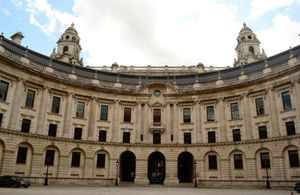Workhouse with connection to Dickens is listed
Heritage Minister gives 18th century building in London which may have inspired setting for opening of Dickens' Oliver Twist Grade II status.

A former 18th century workhouse in London which may have inspired the setting for the opening of Charles Dickens’ Oliver Twist has been listed today.
The building, which was originally known as the Covent Garden Workhouse, was completed by 1778. It became The Strand Union Workhouse in 1836 then was turned into an infirmary later in the century. Until recently it was the outpatients department of the Middlesex Hospital.
It is believed to be the best preserved of three surviving 18th century workhouses in the capital.
Heritage Minister John Penrose said: “This austere and imposing building is an eloquent reminder of one of the grimmer aspects of London’s 18th century social history. Some claim that it was the inspiration for the workhouse in Charles Dickens’ Oliver Twist, but whether it was or it wasn’t, we know that it is the sole survivor of the workhouses that were operating in the capital when Dickens wrote his famous novel, and that as a young man he had lived just nine doors along from it. It is undoubtedly an important and interesting part of our history and heritage, and deserves the extra protection that listing provides.”
The building is also known for its connection to Dr Joseph Rogers, a leading light in workhouse reform.
Delcia Keate, Senior Designation Advisor at English Heritage, said: “Rogers’ direct experience, as Chief Medical Officer, of the appalling conditions there, launched him into the vanguard of reform of healthcare provision for the poor, a significant step towards the socialisation of medical care in Britain.”